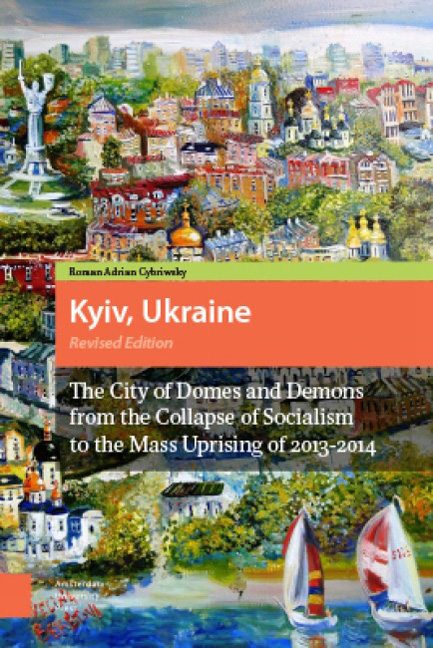 Kyiv, Ukraine
Kyiv, Ukraine Book contents
- Frontmatter
- Dedication
- Contents
- List of Illustrations and Tables
- A Note about Transliteration
- Preface and Acknowledgements
- 1 Far from Heaven
- 2 The Missing Museum of the History of the City of Kyiv
- 3 Sketches from the Capital
- 4 Soviet Ways, Post-Soviet Days
- 5 Historical Memory
- 6 The Center of Kyiv
- 7 A Geography of Privilege and Pretension
- 8 Landscapes of Struggle
- 9 “Suburbia”
- 10 Seamy Stories
- 11 The Defenders of Kyiv
- 12 Reflections
- Postscript
- References
- References
Preface and Acknowledgements
Published online by Cambridge University Press: 10 December 2020
- Frontmatter
- Dedication
- Contents
- List of Illustrations and Tables
- A Note about Transliteration
- Preface and Acknowledgements
- 1 Far from Heaven
- 2 The Missing Museum of the History of the City of Kyiv
- 3 Sketches from the Capital
- 4 Soviet Ways, Post-Soviet Days
- 5 Historical Memory
- 6 The Center of Kyiv
- 7 A Geography of Privilege and Pretension
- 8 Landscapes of Struggle
- 9 “Suburbia”
- 10 Seamy Stories
- 11 The Defenders of Kyiv
- 12 Reflections
- Postscript
- References
- References
Summary
My final edits for this book are being prepared during an extraordinarily tumultuous time in Ukrainian history. After nearly three months of mass protests that began in November, 2013, the spectacularly corrupt and highly unpopular president of the country, Viktor Fedorovych Yanukovych, a major character in this book, was chased from office and is in hiding, probably in Russia. He is reported to have sailed there from Crimea on his personal yacht, which has the ironic name Bandido. His closest cronies in the Party of Regions that he headed are gone too, probably also to Russia and other countries, because of corruption and other criminal charges that they face. A new provisional government made up of Euromaidan (the name of the protest movement) activists is in charge until nationwide elections can take place. However, the victory for Euromaidan was at great cost, as more than 100 civilians were killed when the government stormed their encampment. The largest number of deaths occurred during February 18-20, 2014, in fires that were started by Berkut forces (an elite anti-riot unit), and from fire by government snipers positioned atop tall buildings and hillocks around Independence Square, the main protest venue. The victims of Euromaidan are referred to collectively as Nebesna Sotnya, the “Hundred in Heaven” or “Heaven's Battalion,” and are regarded by most Ukrainians as heroes.
No sooner were these victims buried when, in the wake of the closing ceremonies of the 2014 winter Olympics in Sochi, Russia, armed Russian forces seized control of the Crimean Peninsula, sovereign Ukrainian territory with a large Russian-speaking population. The ostensible purpose, as explained by Russian President Vladimir Putin without supporting evidence, was to protect Russians from hostile Ukrainians. There are ongoing Russian incursions at this time as well in Donetsk, Kharkiv, and other cities near the international border, and casualties among Ukrainian civilians. As a result, there is the threat of war between Ukraine and Russia, and a rekindling of the Cold War between Russia and the democracies of the West. Atop all that is a serious financial crisis in Ukraine, as well as continued stoking by both sides of religious, ethnic, and language tensions between Ukraine's Ukrainian and Russian-speaking citizens, and an unfortunate shortage of good leadership with a clear and popular vision for the country.
- Type
- Chapter
- Information
- Kyiv, UkraineThe City of Domes and Demons from the Collapse of Socialism to the Mass Uprising of 2013–2014, pp. 17 - 26Publisher: Amsterdam University PressPrint publication year: 2014
